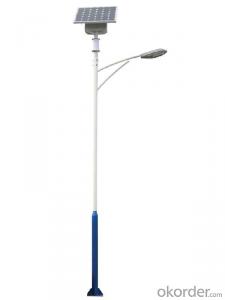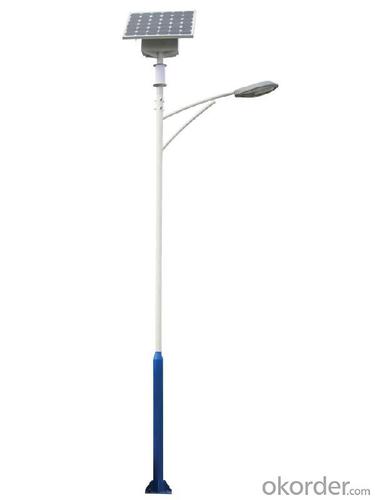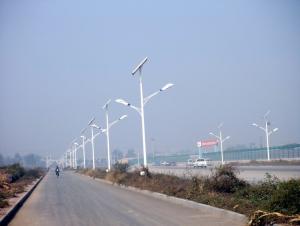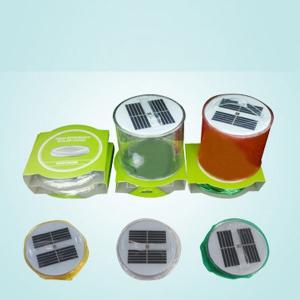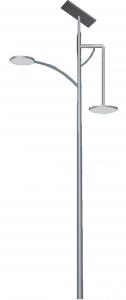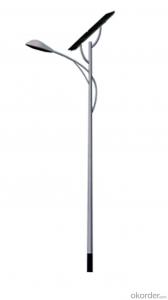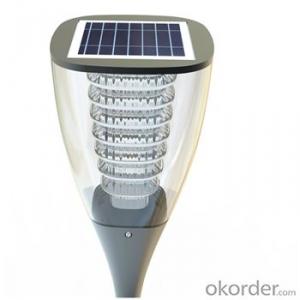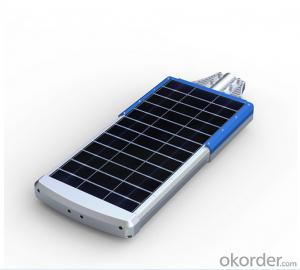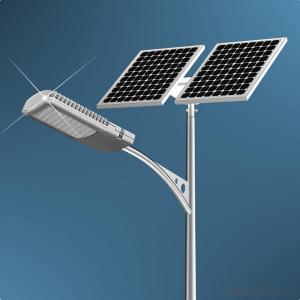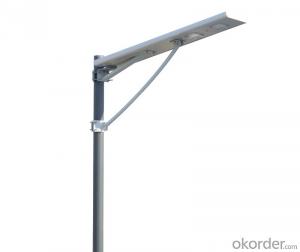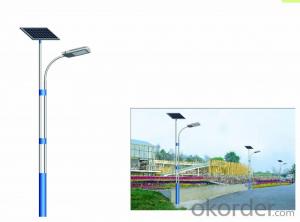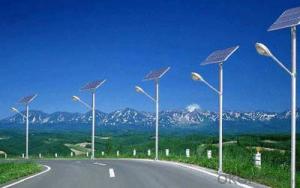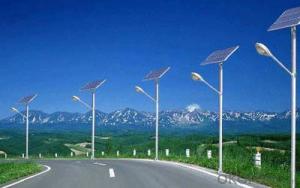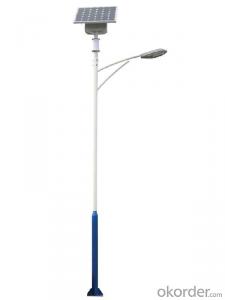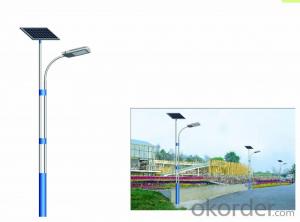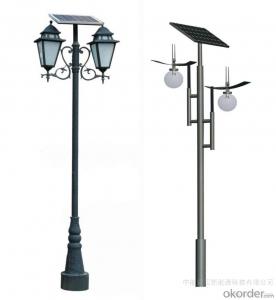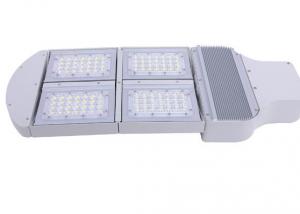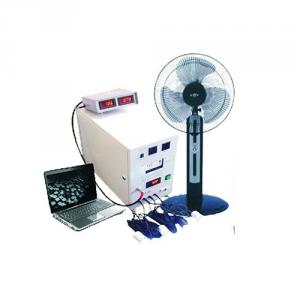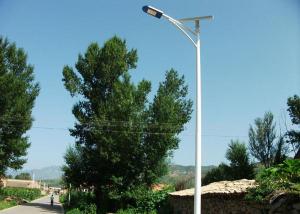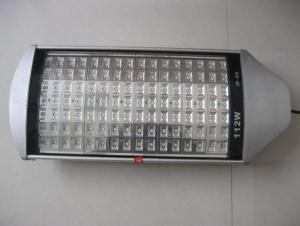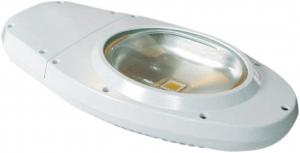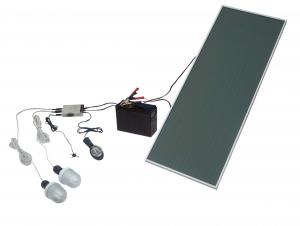Alpan Solar Light - Off Grid New Energy Solar Product 027ze
- Loading Port:
- Shanghai
- Payment Terms:
- TT OR LC
- Min Order Qty:
- 1 watt
- Supply Capability:
- 5000 watt/month
OKorder Service Pledge
OKorder Financial Service
You Might Also Like
1, Product desciption
Inverter circuits designed to produce a variable output voltage range are often used within motor speed controllers.
The DC power for the inverter section can be derived from a normal AC wall outlet or some other source. Control and feedback circuitry is used to adjust the final output of the inverter section which will ultimately determine the speed of the motor operating under its mechanical load.
Motor speed control needs are numerous and include things like: industrial motor driven equipment, electric vehicles, rail transport systems, and power tools. (See related: variable-frequency drive ) Switching states are developed for positive, negative and zero voltages as per the patterns given in the switching Table.
The generated gate pulses are given to each switch in accordance with the developed pattern and thus the output is obtained.
Solar power is energy from the sun. "Solar" is the Latin word for "sun" and
And Powerful source of energy. Without it, there will be no life.
Solar energy is considered as a serious source of energy for many years
of the vast amounts of energy that is made freely available, if harnessed by modern technology.
A magnifying glass can be used to heat up a small amount of water.
The short piece of copper tube is sealed at one end and filled with water.
And magnifying glass is then used to warm up the pipe.
Using more than one magnifying glass will increase the temperature more rapidly.
2, Features of the product
Inverters convert low frequency main AC power to higher frequency for use in induction heating.
To do this, AC power is first rectified to provide DC power. The inverter then changes the DC power to high frequency AC power. Due to the reduction in the number of DC Sources employed, the structure becomes more reliable and the output voltage has higher resolution due to an increase in the number of steps so that the reference sinusoidal voltage can be better achieved.
This configuration has recently become very popular in AC power supply and adjustable speed drive applications. This new inverter can avoid extra clamping diodes or voltage balancing capacitors. There are three kinds of level shifted modulation techniques, namely: 1,High and stable conversion efficienly based on over 4 years professional experience
2 ,High reliability with guaranteed +/-10% output power tolerance
3,Proven materials,tempered front glass,and a sturdy anodized aluminum frame allow modules to operate reliably in multiple mountily configurations
4,Combination of high efficicncy and attractive appearance
The first thing to figure out is the length of road in need of street lights.
This can be a small entrance road only a couple hundred of feet long to miles of streets through an area. Does the area currently have any type of lighting available.
What is the reason for needing street lights in this area
Is the electrical grid already nearby or would you need to call in the power company to bring in electrical lines.
If the electric needs to be brought to the area, how much is this going to cost? Depending on how far the grid electric is from the location of the needed lighting, this can be quite expensive.
How much lighting is needed on the street? Do the lights need to be dark sky compliant.
Do the street lights need to run from dusk to dawn or for only a specified number of hours at night.
Are the street lights able to dim in the middle of the night and still provide enough lighting.
These questions need to be answered before you can decide on how many lights you will need to complete the project.
Grid-tie inverters that are available on the market today use a number of different technologies. The inverters may use the newer high-frequency transformers, conventional low-frequency transformers, or no transformer. Instead of converting direct current directly to 120 or 240 volts AC, high-frequency transformers employ a computerized multi-step process that involves converting the power to high-frequency AC and then back to DC and then to the final AC output voltage.
Historically, there have been concerns about having transformerless electrical systems feed into the public utility grid. The concerns stem from the fact that there is a lack of galvanic isolation between the DC and AC circuits, which could allow the passage of dangerous DC faults to be transmitted to the AC side. Since 2005, the NFPA's NEC allows transformerless (or non-galvanically) inverters. The VDE 0126-1-1 and IEC 6210 also have been amended to allow and define the safety mechanisms needed for such systems. Primarily, residual or ground current detection is used to detect possible fault conditions. Also isolation tests are performed to insure DC to AC separation.
Many solar inverters are designed to be connected to a utility grid, and will not operate when they do not detect the presence of the grid. They contain special circuitry to precisely match the voltage and frequency of the grid.
A charge controller may be used to power DC equipment with solar panels. The charge controller provides a regulated DC output and stores excess energy in a battery as well as monitoring the battery voltage to prevent under/over charging. More expensive units will also perform maximum power point tracking. An inverter can be connected to the output of a charge controller to drive AC loads.
3, Detailed Specification
Data Sheet of High Quality Solar Controller Tracer-1210RN
ModelTracer-1210RN
Rated system voltage12/24V auto work
Rated battery current10A
Rated load current10A
Max.battery voltage32V
Max.PV open circuit voltage100VDC
Max.PV input power12V 130W;24V 260W
Self-consumption<10ma(24v)< span="">
Charge Circuit Voltage<=0.26v< span="">
Discharge Circuit Voltage Drop<=0.15v< span="">
CommunicationTTL232/8 pin RJ45
Temp/compensation-30mV/℃/12V(25℃)
Working temperature-35℃~+55℃
Storage temperature range-35℃~+55℃
4, Product Image
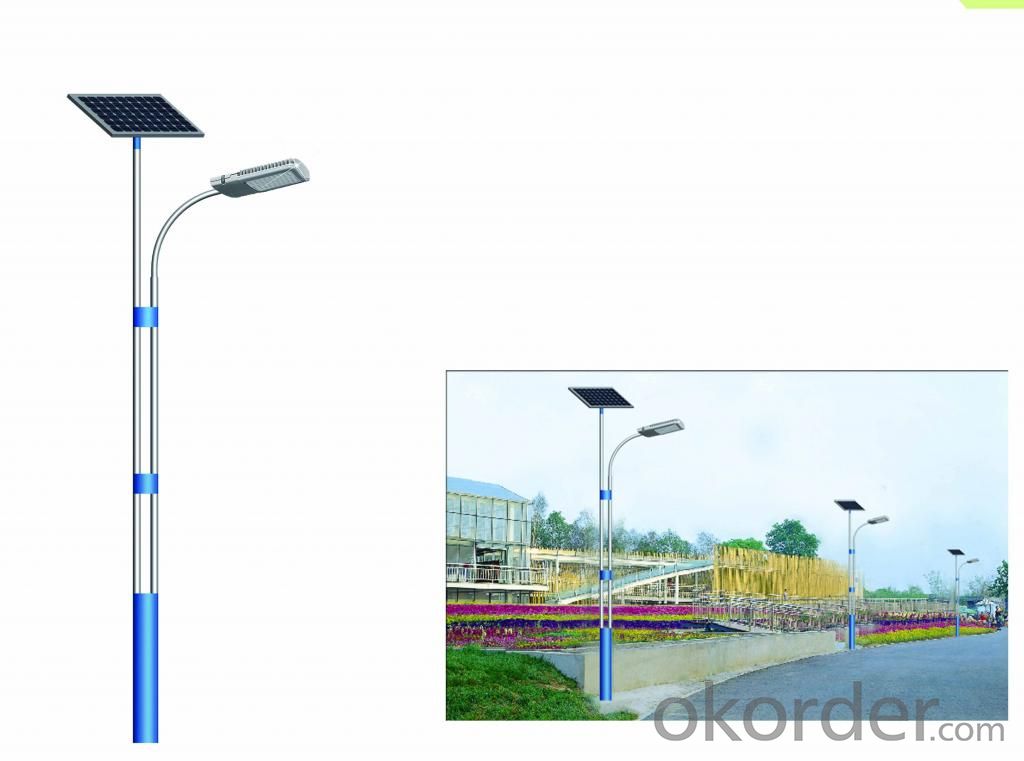
- Q: Can solar lights be used for outdoor sports fields?
- Yes, solar lights can be used for outdoor sports fields. They are a popular and sustainable option for illuminating sports fields at night, as they do not require external power sources and can be easily installed. Solar lights provide sufficient lighting for various outdoor sports activities, ensuring safety and visibility for players and spectators alike.
- Q: Can solar lights be used in areas prone to heavy rain or snow?
- Yes, solar lights can be used in areas prone to heavy rain or snow. Most solar lights are designed to be weather-resistant and able to withstand various weather conditions, including rain and snow. However, it is important to note that excessive amounts of rain or snow can affect the performance of solar lights. Heavy rain or snow may reduce the amount of sunlight reaching the solar panels, thereby reducing the charging capacity and overall performance of the lights. In such cases, it may be necessary to clean the solar panels or adjust the position of the lights to optimize their effectiveness. Additionally, some solar lights come with features like automatic on/off sensors or adjustable brightness settings, which can help conserve energy during periods of limited sunlight. Overall, while solar lights can certainly be used in areas prone to heavy rain or snow, it is always a good idea to consider the specific weather conditions and choose lights that are designed to withstand them.
- Q: Do solar lights require a backup power source?
- Solar lights do not need a backup power source; they rely on photovoltaic cells to capture energy from the sun and convert it into electricity. This stored energy is then used to illuminate the lights at night or in dim environments. As long as there is ample sunlight during the day, solar lights can function autonomously without requiring any extra power supply or wiring. This attribute makes them a practical and economical choice for outdoor lighting since they are not reliant on the electrical grid and can be effortlessly installed in remote areas.
- Q: How does the brightness of solar lights compare to traditional lights?
- The brightness of solar lights can vary depending on the specific model and quality. However, in general, solar lights are less bright than traditional lights powered by electricity. This is because solar lights depend on the energy stored in their batteries, which is generated by the sun, while traditional lights have a constant power supply. Solar lights are designed to provide ambient or accent lighting rather than powerful illumination. They are commonly used to highlight pathways, gardens, and outdoor spaces, creating a gentle and warm glow. The brightness of solar lights is often measured in lumens, with higher lumen ratings indicating greater brightness. It is important to note that advancements in solar technology have led to the development of more powerful solar lights with higher lumen outputs. However, even with these advancements, solar lights generally have less brightness compared to traditional lights. Despite their lower brightness, solar lights offer several advantages over traditional lights. They are energy-efficient as they rely on renewable solar power instead of electricity from the grid. Solar lights are also easy to install and require minimal maintenance. Additionally, they are environmentally friendly as they do not contribute to greenhouse gas emissions or rely on non-renewable energy sources.
- Q: How do solar lights handle voltage spikes or overcharging?
- Solar lights typically have built-in protection mechanisms to handle voltage spikes or overcharging. One common feature is a charge controller, which regulates the flow of electricity from the solar panel to the battery. The charge controller ensures that the battery does not get overcharged by limiting the charging current or diverting excess energy. Moreover, many solar lights also incorporate surge protectors or voltage regulators to safeguard the internal components from voltage spikes. These protective measures help to extend the lifespan of the solar lights and ensure their safe operation.
- Q: How do you choose the right solar light manufacturer?
- When choosing the right solar light manufacturer, it is important to consider several factors. Firstly, assess the manufacturer's reputation and experience in the industry. Look for customer reviews and feedback to gauge their product quality and reliability. Secondly, consider the range of solar lights they offer and whether they meet your specific requirements. Look for manufacturers that provide a variety of options, including different sizes, designs, and functionalities. Additionally, it is crucial to ensure that the manufacturer uses high-quality materials and components in their products. Look for certifications and standards compliance to ensure the lights are durable and efficient. Finally, consider the manufacturer's customer service and warranty policies. A reputable manufacturer should offer excellent customer support and provide a reasonable warranty period for their products. By considering these factors, you can choose a reliable and trustworthy solar light manufacturer.
- Q: Can solar lights be used in conjunction with other outdoor lighting systems?
- Yes, solar lights can be used in conjunction with other outdoor lighting systems. Solar lights are a versatile and eco-friendly option that can be easily integrated into existing outdoor lighting setups. They can complement traditional electrical lighting systems, providing additional illumination and enhancing the overall lighting design.
- Q: Can solar lights be used in greenhouses?
- Greenhouses can indeed utilize solar lights. They are widely favored by greenhouse owners as an environmentally friendly lighting solution. By harnessing solar power to generate electricity, these lights eliminate the reliance on conventional energy sources and diminish greenhouse gas emissions. Installation of solar lights on the greenhouse's roof or walls guarantees sufficient lighting for plants throughout the day. Furthermore, their simple installation and maintenance make solar lights a cost-effective option for greenhouse owners.
- Q: Are solar lights better than traditional lights?
- Solar lights have several advantages over traditional lights. Firstly, they are powered by renewable energy from the sun, making them more environmentally friendly and energy-efficient. Additionally, solar lights do not require any wiring or electricity, which makes them easier to install and maintain. They also provide a cost-effective lighting solution, as they eliminate the need for electricity bills. However, solar lights may have some limitations in terms of brightness and consistency of illumination, particularly in areas with limited sunlight. Overall, solar lights offer numerous benefits and are a great alternative to traditional lights in many situations.
- Q: Can solar lights be used for outdoor sports stadiums or arenas?
- Yes, solar lights can be used for outdoor sports stadiums or arenas. Solar lighting systems are a sustainable and cost-effective option for illuminating large outdoor spaces, providing ample lighting for sporting events while reducing reliance on traditional energy sources. They can be easily installed and are equipped with efficient solar panels that convert sunlight into electricity, ensuring continuous lighting during nighttime events. Additionally, solar lights offer flexibility in terms of placement and can be adjusted to meet specific lighting requirements, making them a viable option for outdoor sports stadiums or arenas.
Send your message to us
Alpan Solar Light - Off Grid New Energy Solar Product 027ze
- Loading Port:
- Shanghai
- Payment Terms:
- TT OR LC
- Min Order Qty:
- 1 watt
- Supply Capability:
- 5000 watt/month
OKorder Service Pledge
OKorder Financial Service
Similar products
Hot products
Hot Searches
Related keywords
